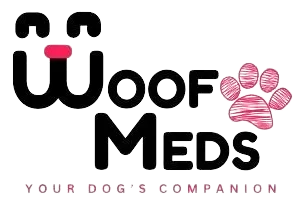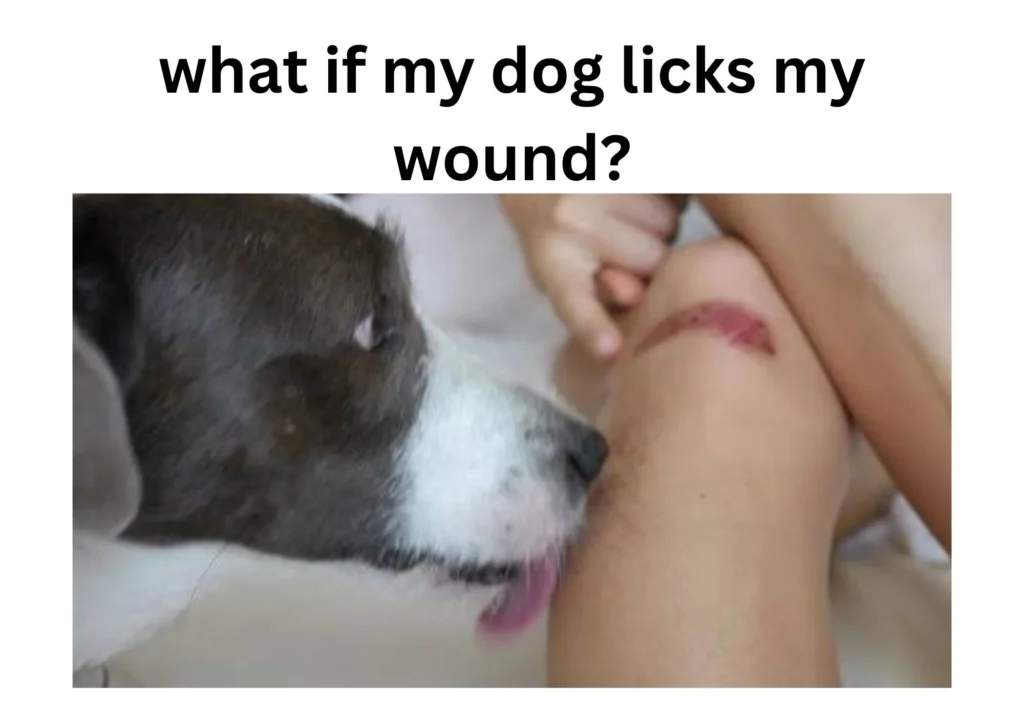Understanding the behavior of our canine companions offers invaluable insights into their emotional and physical well-being. A common query among dog owners, “why does my dog lick me so much,” reveals a multifaceted aspect of dog behavior that taps into aspects of bonding, communication, and health. Dogs licking their owners can be a sign of affection, a means to communicate varying needs or even indicate underlying medical conditions. This behavior serves as a window into their complex emotional states, where every lick can signify anything from comfort, stress, submission, to exploring their world through the sensory experience of taste and scent.
This article delves into the myriad reasons behind why dogs lick humans, aiming to decode the different types of licking and understand its significance in dogs’ social behavior. From grooming and affection to anxiety relief and the expression of endorphins, we explore why licking becomes a central part of a dog’s way to interact with their human companions. We’ll address when this behavior crosses into being problematic and provide strategies for managing excessive licking. Moreover, the impact of human responses on this behavior will be examined to offer a comprehensive guide on fostering a healthy, understanding relationship between dogs and their owners.
Understanding Why Dogs Lick Humans
Theories Behind Dogs Licking Behavior
Licking is a natural and instinctive behavior for dogs, deeply rooted in their genetic makeup. Originally, puppies lick their mother’s face to signal hunger and stimulate regurgitation, providing them with food. This behavior has evolved, and while it may still have a component of seeking food, it has also become a ritualized greeting and a sign of affection within the pack. Moreover, dogs may lick simply because humans taste good, especially if the skin is salty after exercise.
Expression of Affection and Bonding
Dogs often lick to express affection and establish a bond with their human companions. This behavior is reminiscent of the affection and comfort they experienced when their mother licked them as puppies. Licking releases pleasurable endorphins in dogs, providing a sense of comfort and happiness, similar to the feelings humans get from affectionate touches. This can explain why some dogs may lick more frequently when they are in a relaxed and happy state, seeing their owners as part of their pack.
Seeking Attention and Comfort
Licking can also be a dog’s strategy for seeking attention or providing comfort. Dogs quickly learn that licking leads to positive reactions from their owners, such as petting or verbal praise, reinforcing the behavior. In situations of anxiety or stress, licking can be a self-soothing behavior that helps dogs calm down, akin to how humans might bite their nails or fidget. If a dog feels anxious, particularly with separation anxiety, licking can be a way to alleviate some of their stress.
Understanding these motivations behind why dogs lick can help owners better respond to their pets’ needs, enhancing the bond between them.
Decoding the Different Types of Licking
Licking as a Form of Communication
Dogs utilize licking as one of their primary forms of communication, often conveying messages that they cannot express verbally. For instance, a dog might lick a human’s face or hands as a request for attention or as an expression of their current emotional state, such as feeling anxious or stressed 1314. This behavior is deeply ingrained, with roots tracing back to their ancestors. Puppies, for example, lick their mother’s face to signal hunger and initiate feeding, a behavior that evolves into a complex communication tool as they grow.
Understanding these cues is crucial for owners to respond appropriately to their dogs’ needs. Observing the context and accompanying body language when a dog licks can provide insights into what the dog might be trying to communicate, whether it’s a simple greeting, a sign of submission, or an indication of their desire to play.
Differentiating Between Affectionate and Compulsive Licking
While licking is often a gesture of affection and bonding, it can also cross into compulsive behavior, indicating underlying issues. Affectionate licking, characterized by occasional licks accompanied by other friendly behaviors, helps strengthen the bond between dogs and their owners. This type of licking releases oxytocin, promoting feelings of happiness and attachment in both the dog and the human.
On the other hand, compulsive licking, which is excessive and repetitive, often signals stress or anxiety in dogs. This type of behavior may require intervention from professionals to address potential emotional or medical causes. Owners can distinguish between these behaviors by noting the frequency of licking and the context in which it occurs. If the licking seems incessant and is accompanied by signs of distress, it may be time to consult a behaviorist or veterinarian.
Recognizing the different types of licking and understanding the messages dogs are trying to convey through this behavior can significantly enhance the relationship between dogs and their owners, ensuring that the needs of both are met effectively.
The Significance of Licking in Dogs’ Social Behavior
Licking as a Sign of Submission within the Pack
Licking behaviors in dogs often signify submission within their social hierarchy. This gesture, typically seen when a dog extends its tongue straight forward to lick the nose or face of another, is an appeasement behavior recognized across various canine studies. Described by Roger Abrantes as a “pacifying behavior” and by Barbara Handelman as an “appeasement signal,” it communicates a non-threatening intent among canines. This behavior roots back to neonatal nursing actions where puppies lick their mother’s face to signal hunger and stimulate regurgitation, evolving into a complex social signal in adult dogs.
Grooming and Bonding Among Dogs
Grooming through licking is not only about cleanliness but also a profound demonstration of bonding and care among dogs. This behavior, which begins with the mother’s licks to her puppies, is crucial for their hygiene and emotional bonding. It stimulates circulation, encourages elimination, and provides comfort and reassurance, establishing a nurturing connection from an early age. As dogs mature, licking remains a central aspect of their interactions, serving as a means to express needs and desires within the pack. This nurturing behavior extends to their human companions, viewing them as integral members of their pack, deserving of care and attention.
In conclusion, understanding these aspects of licking helps in appreciating the complex social structures and emotional expressions of dogs, enhancing the human-canine bond.
When Does Licking Become a Problem?
Identifying Obsessive and Excessive Licking
All dogs lick, but when this behavior becomes excessive, it may signal underlying issues that need attention. Excessive licking is characterized by the compulsive licking of any surface for a period longer than needed for exploratory purposes, often including air, human faces, furniture, and the dog’s own paws or genitals. This behavior can escalate, starting intermittently and increasing in frequency and intensity, sometimes accompanied by scratching and biting, leading to hot spots and painful, abraded areas.
Obsessive-compulsive disorder in dogs can manifest as excessive licking, where dogs seem compelled to lick and find it difficult to stop. These dogs may spend hours licking themselves or objects such as floors or furniture, which can be distressing to observe. Recognizing these patterns is crucial for addressing potential behavioral or medical problems effectively.
Potential Health Concerns Related to Licking
Excessive licking can also be a symptom of several health issues. Skin conditions linked to immune response-related diseases or other underlying illnesses like endocrine disorders can cause itchy skin, prompting dogs to lick excessively. Infections from bacteria, fungi, or parasites can also lead to itchiness and excessive licking. A veterinary examination might include skin scrapes and fluid samples to check for evidence of yeast or mites.
Moreover, underlying pain from conditions such as arthritis or injuries can lead dogs to lick the affected areas as the licking releases endorphins, which act as natural painkillers. Gastrointestinal issues, including upset stomach, reflux, or nausea, are common medical causes of excessive licking. Studies suggest that a significant percentage of dogs with excessive licking behaviors suffer from gastrointestinal disorders.
If a dog’s excessive licking includes specific areas like paws or if it is accompanied by symptoms such as hair loss, skin redness, or irritation, it is advisable to consult a veterinarian to explore potential medical issues. Addressing these underlying conditions can significantly improve the quality of life for both the dog and its owner, ensuring a healthier and happier relationship.
Strategies to Manage Excessive Licking
Training and Redirecting Licking Behavior
Training and redirecting your dog’s licking behavior is a crucial strategy in managing excessive licking. Employing positive reinforcement training can effectively curb this behavior by rewarding your dog when they perform the desired behavior. For instance, if you instruct your dog to “Leave it” and they cease licking, immediately reward them with a treat. This method not only discourages undesirable licking but also strengthens the bond between you and your pet.
Another approach is to redirect your dog’s focus by engaging them in alternative activities. Keeping your dog occupied with toys or tasks can significantly reduce the frequency of licking as it diverts their attention. Additionally, commands like “stop” or “no” can be trained, and if the dog complies, they should be rewarded to reinforce the behavior. Conversely, you can train the command “kiss” to control when and how your dog licks, providing a structured way for your dog to express this natural behavior without it becoming excessive.
Consulting with Veterinarians and Behaviorists
If the excessive licking persists despite initial training efforts, consulting with a veterinarian is essential to rule out any underlying medical causes. Conditions such as allergies, dental issues, or gastrointestinal problems could be prompting the excessive licking behavior. A thorough examination by a veterinarian can help diagnose these conditions, and appropriate treatments such as allergy medications, dental cleanings, or gastrointestinal therapies can be administered based on the diagnosis.
For behavioral causes of excessive licking, such as anxiety or stress, veterinarians may recommend behavior modification techniques or medications that reduce anxiety. In some cases, involving a professional dog trainer or a certified behavior consultant might be necessary. These professionals can offer specialized guidance and strategies tailored to your dog’s specific situation, helping to manage the licking behavior effectively. Furthermore, ensuring that your dog receives adequate physical exercise and mental stimulation can prevent boredom and reduce the urge to lick excessively. Engaging your dog in a variety of activities and providing opportunities for mental enrichment are vital components of a comprehensive management strategy.
The Impact of Human Responses on Dogs’ Licking Behavior
Reinforcing or Discouraging Licking Through Human Interaction
When dogs lick their human companions, it often signifies affection and can initiate a delightful interaction that strengthens the bond between them. By responding positively to a dog’s licks, owners reinforce this behavior, encouraging their pets to continue using licking as a form of communication and bonding. However, it’s crucial for owners to maintain a balance and not overindulge this behavior, as it can lead to attention-seeking actions from the dog.
In situations where licking is less desirable, such as during stressful conditions for the dog, licking can serve as a self-soothing mechanism. Owners should be aware of the context in which their dogs resort to licking and recognize when it might be indicative of underlying stress or anxiety. Addressing these issues promptly with the help of professionals can prevent the development of compulsive licking habits that are harder to manage.
Setting clear boundaries is essential. Training dogs to understand when licking is appropriate and when it is not helps in maintaining a respectful and balanced relationship. This involves consistent communication and behavior reinforcement techniques that align with the desired interaction norms within the home.
Understanding and Responding to Your Dog’s Needs
It is important for dog owners to react appropriately to their dog’s licking behavior. Punishing a dog for licking can create confusion and distress, as licking is a natural greeting behavior for them. Instead, teaching alternative greetings and rewarding the dog for these can foster better behaviors. For instance, covering one’s face and encouraging the dog to lick the hand instead, then rewarding this action, can effectively redirect the licking behavior to a more acceptable manner.
Understanding the emotional and physical cues that accompany licking is crucial. If a dog suddenly begins to lick excessively, it could be a sign of distress or discomfort, signaling a need for attention or relief from anxiety. Recognizing these signs allows owners to take proactive steps to address any underlying issues, ensuring the well-being of their pet.
Moreover, being informed about the potential health risks associated with allowing dogs to lick human faces, such as the transmission of bacteria and parasites, is vital. Making an informed decision about whether to allow a dog to lick one’s face can protect both the owner and the pet from health complications.
By understanding and appropriately responding to their dog’s licking behavior, owners can ensure a healthy, respectful, and loving relationship with their pets, enhancing the overall happiness and well-being of both.
Conclusion
Throughout this exploration, we’ve unearthed the complexity and depth behind the common behavior of dogs licking their human companions. From expressions of affection, communication needs, to underlying health concerns, each lick from a dog can carry a multitude of meanings and intentions. Understanding these reasons not only demystifies this canine behavior but also enhances the bond between dogs and their owners, ensuring responses are attuned to the needs and well-being of our furry friends.
Addressing excessive licking with empathy and informed action paves the way for healthier interactions and a more profound companionship. By recognizing the signs that demand attention, whether they be for behavioral training or medical consultation, owners can provide more responsive and nurturing environments for their dogs. Ultimately, appreciating the significance behind these licks deepens our connection with our canine companions, enriching the lives of both dog and owner alike.
FAQs
1. Why does my dog constantly lick me?
Dogs often lick their owners to capture their attention for various needs such as food, a bathroom break, or simply to be petted. Additionally, humans can taste appealing to dogs, so they may lick you because they enjoy the flavor of your skin.
2. Is it okay to let my dog lick me?
While it’s generally safe to let your family dog lick you, it’s best to avoid allowing them to lick your mouth, nose, or eyes due to the risk of transferring bacteria. Also, be cautious with dogs that are not familiar to you, as there is a higher risk of unwanted behavior like biting when your face is close to any dog.
3. Do dogs choose a favorite person?
Dogs, much like humans, tend to favor certain people over others based on positive interactions and experiences. While treats can help in forming a bond, engaging in play is the most effective and healthy way to establish and strengthen a relationship with your dog.
4. What does it mean when my dog puts his paw on me and then licks me?
When your dog places a paw on you and starts licking, it is typically a gesture to draw your attention because they need or want something, such as food, water, or to go outside. Some dogs may do this simply to seek your attention, using their paws as a way to communicate their desires.




Helpo very nice site!! Guy .. Beautiful .. Amazing ..
I’ll bookmark your webb siite and take the feeds also?
I am glad to seek out numerous helpful information right here in the submit,
wwe want develop more strategies in this
regard, thjanks for sharing. . . . . . https://Zeleniymis.com.ua/
Hey! Quick question that’s totally off topic. Do you know how
to make your site mobile friendly? My blog looks weidd
when browsing from myy apple iphone. I’m trying
to find a theme or plugin that might be able to resolve this
issue. If you have any suggestions, please share.
Cheers! https://Zeleniymis.Com.ua/